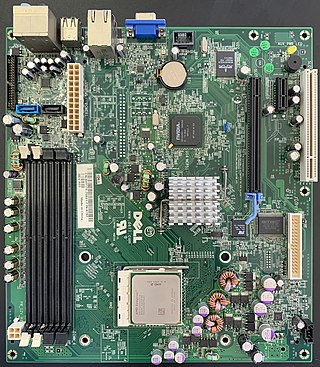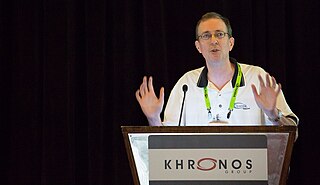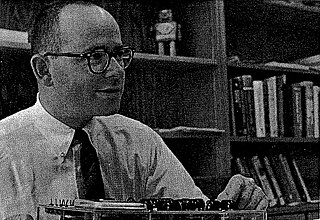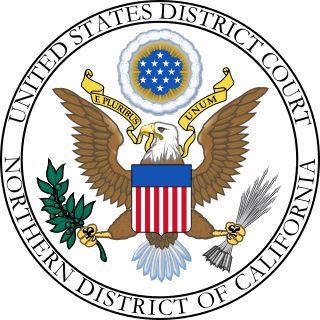
Computer engineering is a branch of computer science and electronic engineering that integrates several fields of computer science and electronic engineering required to develop computer hardware and software. Computer engineering is referred to as computer science and engineering at some universities.

John Leroy Hennessy is an American computer scientist who is chairperson of Alphabet Inc. (Google). Hennessy is one of the founders of MIPS Technologies and Atheros, and also the tenth President of Stanford University. Hennessy announced that he would step down in the summer of 2016. He was succeeded as president by Marc Tessier-Lavigne. Marc Andreessen called him "the godfather of Silicon Valley."
Rambus Inc. is an American technology company that designs, develops and licenses chip interface technologies and architectures that are used in digital electronics products. The company, founded in 1990, is well known for inventing RDRAM and for its intellectual property-based litigation following the introduction of DDR-SDRAM memory.

Multibus is a computer bus standard used in industrial systems. It was developed by Intel Corporation and was adopted as the IEEE 796 bus.

Kurt Akeley is an American computer graphics engineer.

Bernard Widrow is a U.S. professor of electrical engineering at Stanford University. He is the co-inventor of the Widrow–Hoff least mean squares filter (LMS) adaptive algorithm with his then doctoral student Ted Hoff. The LMS algorithm led to the ADALINE and MADALINE artificial neural networks and to the backpropagation technique. He made other fundamental contributions to the development of signal processing in the fields of geophysics, adaptive antennas, and adaptive filtering. A summary of his work is.

Richard "Dick" Francis Lyon is an American inventor, scientist, and engineer. He is one of the two people who independently invented the first optical mouse devices in 1980. He has worked in signal processing and was a co-founder of Foveon, Inc., a digital camera and image sensor company.
William Michael Johnson is a technologist, and pioneer in superscalar microprocessor design in the United States.
Thomas H. Lee is a professor in the Department of Electrical Engineering at Stanford University. Lee's research focus has been on gigahertz-speed wireline and wireless integrated circuits built in conventional silicon technologies, particularly CMOS; microwave; and RF circuits.

Oyekunle Ayinde "Kunle" Olukotun is a British-born Nigerian computer scientist who is the Cadence Design Systems Professor of the Stanford School of Engineering, Professor of Electrical Engineering and Computer Science at Stanford University and the director of the Stanford Pervasive Parallelism Lab. Olukotun is known as the “father of the multi-core processor”, and the leader of the Stanford Hydra Chip Multiprocessor research project. Olukotun's achievements include designing the first general-purpose multi-core CPU, innovating single-chip multiprocessor and multi-threaded processor design, and pioneering multicore CPUs and GPUs, transactional memory technology and domain-specific languages programming models. Olukotun's research interests include computer architecture, parallel programming environments and scalable parallel systems, domain specific languages and high-level compilers.

Rambus Inc. v. NVIDIA Corporation was a patent infringement case between Rambus and Nvidia. The case was heard in the United States District Court for the Northern District of California.

Saraju Mohanty is an Indian-American professor of the Department of Computer Science and Engineering, and the director of the Smart Electronic Systems Laboratory, at the University of North Texas in Denton, Texas. Mohanty received a Glorious India Award – Rich and Famous NRIs of America in 2017 for his contributions to the discipline. Mohanty is a researcher in the areas of "smart electronics for smart cities/villages", "smart healthcare", "application-Specific things for efficient edge computing", and "methodologies for digital and mixed-signal hardware". He has made significant research contributions to security by design (SbD) for electronic systems, hardware-assisted security (HAS) and protection, high-level synthesis of digital signal processing (DSP) hardware, and mixed-signal integrated circuit computer-aided design and electronic design automation. Mohanty has been the editor-in-chief (EiC) of the IEEE Consumer Electronics Magazine during 2016-2021. He has held the Chair of the IEEE Computer Society's Technical Committee on Very Large Scale Integration during 2014-2018. He holds 4 US patents in the areas of his research, and has published 500 research articles and 5 books. He is ranked among top 2% faculty around the world in Computer Science and Engineering discipline as per the standardized citation metric adopted by the Public Library of Science Biology journal.

Eby G. Friedman is an electrical engineer, and Distinguished Professor of Electrical and Computer Engineering at the University of Rochester. Friedman is also a visiting professor at the Technion - Israel Institute of Technology. He is a Senior Fulbright Fellow and a Fellow of the IEEE.

Radovan Stojanović is the Professor of Electrical Engineering at the University of Montenegro, Montenegro and Founder and President of the Montenegrin Association for New Technologies (MANT). He is a member of the Board of the Montenegrin Academy of Sciences and Arts for Natural and Technical Sciences.

Mark M. Tehranipoor is an Iranian American academic researcher specializing in hardware security and trust, electronics supply chain security, IoT security, and reliable and testable VLSI design. He is the Intel Charles E. Young Preeminence Endowed Professor in Cybersecurity at the University of Florida and serves as the Director of the Florida Institute for Cybersecurity Research. Since June 2022, he has served as the chair of the Department of Electrical and Computer Engineering at the University of Florida. He is a fellow of IEEE, ACM, and NAI as well as a Golden Core member of the IEEE. He is a co-founder of the International Symposium on Hardware Oriented Security and Trust (HOST). He is the recipient of the 2023 SRC Aristotle award. Tehranipoor also serves as a co-director of the Air Force Office of Scientific Research CYAN and MEST Centers of Excellence.
George Perlegos is a Greek-American computer scientist and engineer, best known for pioneering the use of EEPROM and founding Atmel.
Ingrid Verbauwhede is a professor at the COSIC Research Group of the Electrical Engineering Department, KU Leuven, where she leads the embedded systems team. She is a pioneer in the field of secure embedded circuits and systems, with several awards recognising her contributions to the field. She is member of the Royal Flemish Academy of Belgium for Science and the Arts since 2011. She is a fellow of IEEE.
Lawrence Pileggi is the Coraluppi Head and Tanoto Professor of Electrical and Computer Engineering at Carnegie Mellon University. He is a specialist in the automation of integrated circuits, and developing software tools for the optimization of power grids. Pileggi's research has been cited thousands of times in engineering papers.

Milica Stojanovic is an American-Serbian engineer. She is a Professor of Electrical and Computer Engineering at Northeastern University. Stojanovic's work focuses on wireless information transmission through challenging environments and in particular on underwater acoustic communications.
Vojin G. Oklobdzija is a computer and electronics engineer, scientist, author, and academic. He is professor emeritus of the University of California, Life Fellow of IEEE and past President of the IEEE Circuits and Systems Society.













